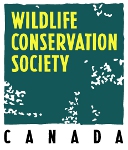Northern Appalachian/Acadian Ecoregion
Conservation Atlas
- 2C1Forest Atlas |
- About Two Countries, One Forest
About Two Countries, One Forest

Two Countries, One Forest (2C1Forest) is a Canadian-U.S. collaborative of conservation organizations, researchers, foundations and land trusts working to conserve and restore the forests and natural heritage of the Northern Appalachian/Acadian ecoregion.
Our Vision
Our vision is "to see one forest" that spans jurisdictional and political boundaries, supports an abundance of native biodiversity, is able to adapt to a changing climate and is home to thriving human communities.
We aim to realize this vision by:
- working and thinking at an ecoregional level, and within ecological borders versus political boundaries
- defining a clear framework of understanding and developing a network that facilitates and supports a cross-border sharing of vital information; and
- using the basic principles of science-based landscape-level conservation.
The Ecosystem
The 33-million hectares (80-million acres) of the Northern Appalachian/Acadian ecoregion stretches from New York to Nova Scotia, spanning 2 countries and encompassing all or part of 5 states (New York, Vermont, New Hampshire, Massachusetts and Maine) and 4 provinces (Quebec, New Brunswick, Nova Scotia and Prince Edward Island).
The Northern Appalachian Acadian ecoregion was shaped by the retreat of glaciers 12,000 years ago and the mineral-rich soils they left behind. The heart of the region is the rugged chain of the Appalachian Mountains, stretching down from the Gaspe Peninsula in Quebec to the Berkshire Plateau in Massachusetts. This ancient mountain range is flanked by forests whose fall splendor is world-renown - the Acadian forest of the Canadian Maritimes to the east, the Adirondack Mountains of New York to the west - and characterized by a web of ecologically rich wetlands, rivers, lakes, streams and bogs and numerous freshwater and wetland species,some globally unique.
Once home to top predators like the mountain lion and wolf, the diverse habitats of the ecoregion support a wide variety of plants and animals, including wide ranging mammals like lynx, moose and black bear. However the ecoregion is also home to 5.4 million people and nearly 70 million who live within a day's drive. As human land uses expand and transportation networks grow, keeping the remaining forest habitat intact and connected is a significant challenge.



